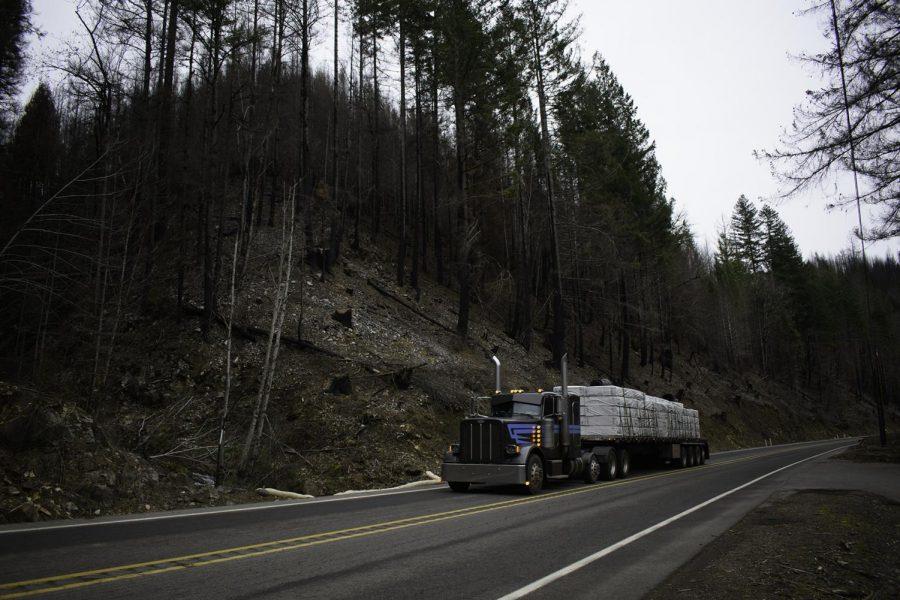Wildfire prevention needs to be ‘proactive instead of reactive,’ according to OSU faculty
March 17, 2021
Correction: The photo caption originally had the incorrect starting date of the Holiday Farm Fire. This has been corrected.
Oregon State University faculty are advising students that conversations and action surrounding wildfire prevention begin now, since wildfires can be unpredictable and stem from many different causes.
With months to go until the summer season, many within the OSU community are not thinking about the upcoming wildfire season, but there is still a way for students to take action and potentially prevent more devastation.
However, with a recent string of devastating wildfires across Oregon, OSU faculty are advising students that conversations and action surrounding wildfire prevention begin now.
Daniel Leavell is a professor within the College of Forestry who specializes in wildfire management and prevention. According to Leavell, dramatic changes in the climate have contributed to the correlated trends that show that fire seasons are getting longer, the burn intensity of wildfires is getting stronger and wildfires are burning more acres of land.
However, with the devastating wildfires across Oregon in 2020, Leavell said the best way to prevent wildfires is to be “proactive instead of reactive.”
According to Leavell, this means that students and faculty need to address the risk factors for wildfires in their community and financial investment is one way to be proactive, since wildfires can bring with them magnitudes more in financial damage.
Meg Krawchuk, an associate professor within the College of Forestry would agree that proactive action needs to be taken to prevent wildfires.
Krawchuk said that we need to “use 2020 as a learning moment to think about how we can change our behaviors to be more in line with the realization that we will need to coexist with fire.”
According to Krawchuk, she expects that we will experience drier weather this summer like we have in previous wildfire seasons. This dry weather that we have experienced previously has been a factor in influencing the overall intensity of wildfires.
Leavell said different resources that students and faculty can utilize. These include the Oregon State Fire Marshal’s office, the Oregon Department of Forestry and OSU’s extension program.
OSU’s fire extension program is a newer program developed by faculty at OSU that is designed to identify landscapes in greater need of resources to reduce fire risk. In addition, OSU’s fire extension program aims to educate and provide outreach for Oregonians.
Carrie Berger is the manager of the Extension Fire Program at OSU. She hopes that the OSU Fire extension program helps to “prepare individuals for when fires do occur.”
Starting in the month of March, Berger said the OSU fire extension program plans to launch a fire prepared program that guides the user through a process of thinking about their own and community fire preparedness.
This campaign includes educating the public about the benefits of owning emergency go-bags filled with necessities when emergency evacuation is necessary. In addition, educating the public about the different levels of evacuation and how to create cleaner air spaces when there is smoke is just a few of the fire extension program’s priorities.




















































































![Newspaper clipping from February 25, 1970 in the Daily Barometer showing an article written by Bob Allen, past Barometer Editor. This article was written to spotlight both the student body’s lack of participation with student government at the time in conjunction with their class representatives response. [It’s important to note ASOSU was not structured identically to today’s standards, likely having a president on behalf of each class work together as one entity as opposed to one president representing all classes.]](https://dailybaro.orangemedianetwork.com/wp-content/uploads/2025/03/Screenshot-2025-03-12-1.00.42-PM-e1741811160853.png)























